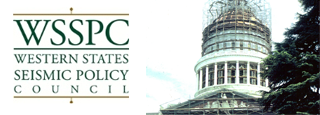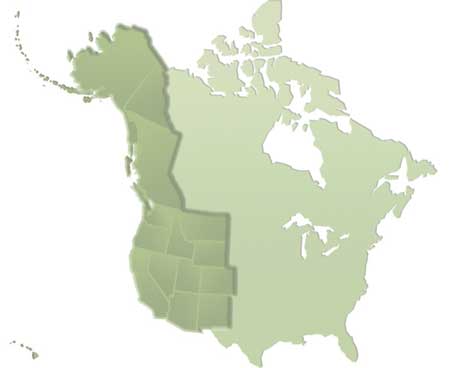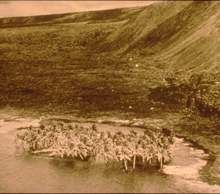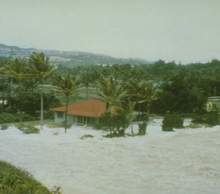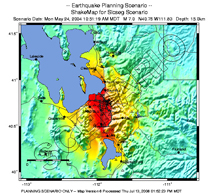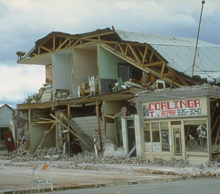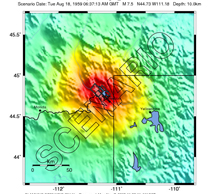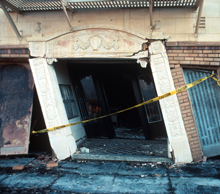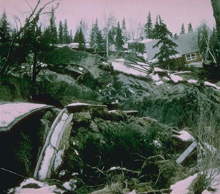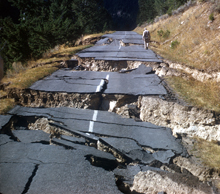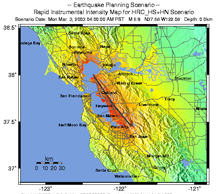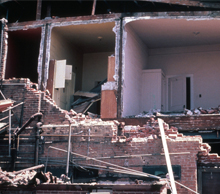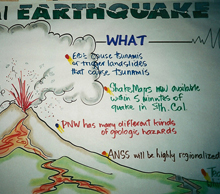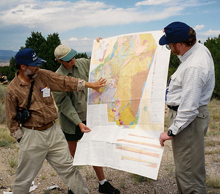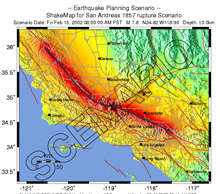Utah Earthquake Hazard Mitigation Legislation
(UT‐1) Civil Defense Act of 1950: Authorizes the creation of the Utah Civil Defense Agency (the predecessor to Utah HLS) and the development of a statewide civil defense program. Give Utah HLS statewide authority to coordinate emergency management activities statewide.
(UT‐2) Disaster Response Recovery Act, Utah Code 63‐5A: Assist state and local government to effectively provide emergency disaster response and recovery assistance.
(UT‐3) Utah Code Annotated Chapter 73 Geological and Mineral Survey‐Section 68‐73‐6: Objectives of Survey (1) Determine and investigate areas of geologic and topographic hazards that could affect the safety of, or cause economic loss to, the citizens of this state; (f) assist local and state government agencies in their planning, zoning, and building regulations functions by publishing maps, delineating appropriately wide special earthquake risk areas, and, at the request of state agencies, review the citing of critical facilities.
(UT‐4) Utah State Office of Education (USOE) Rule R277‐455 Standards and Procedures for building plan review R277‐455‐4 Criteria for Approval: To receive approval of a proposed building site, the local school district must certify that: Staff of the Utah Geologic Survey have reviewed and recommended approval of the geologic hazards report provided by the school districts geo‐technical consultant.
(UT‐5) Emergency Management Act of 1981, Utah Code 53‐2, 63‐5: Establishes an emergency/disaster management system. Establishes Utah HLS. In Utah Code 53‐2‐104, it is stated that the Utah Division of Homeland Security shall prepare, implement, and maintain programs and plans to provide for: Prevention and minimization of injury and damage caused by disasters; Identification of areas particularly vulnerable to disasters; Coordination of hazard mitigation and other preventive and preparedness measures designed to eliminate or reduce disasters; Assistance to local officials in designing local emergency action plans; Coordination of federal, state, and local emergency activities; Coordination of emergency operations plans with emergency plans of the federal government; and Other measures necessary, incidental, or appropriate to this chapter.
(UT‐6) Utah Seismic Safety Commission Act: The 13‐member Utah Seismic Safety Commission (USSC) was established with the passage of House Bill 358, during the 1994 legislative session. In the 2000 legislative session, the USSC Act was amended by HB200. This amendment revised the membership of the Commission and added two additional seats. The USSC advises federal, state and local agencies and jurisdictions along with the private sector on earthquake‐related policy and loss‐reduction strategies. The objective of USSC is to: Review earthquake‐related hazards and risk in Utah; Prioritize recommendations to identify and mitigate these hazards and risks; Prioritize recommendations for adoption as policy or loss reduction strategies; Act as a source of information for earthquake safety and promote loss reduction measures; Prepare a strategic seismic safety planning document, and Update the strategic‐planning document and other supporting studies or reports. The USSC has compiled a report outlining a long‐term plan to improve earthquake safety in the state of Utah entitled “A Strategic Plan for Earthquake Safety in Utah.”
(UT‐7) Utah Administrative Code Rule R156‐56 Utah Uniform Building Standard Act Rule: The State of Utah adopted the International Building Code IBC. By law, each jurisdiction in Utah must also adopt the IBC. This process has occurred in the majority of both urban and rural jurisdictions Utah. These higher design codes especially with regards to seismic design will greatly reduce damage to new buildings.
_____________________________________________________________________________
Information taken from the Washington State Seismic Mitigation Policy Gap Analysis: A Cross-State Comparison, by Scott B. Miles, Ph. D. and Brian D. Gouran, L.G.
